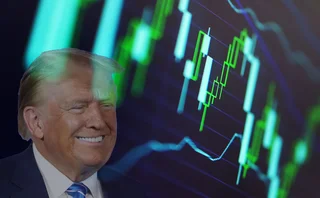
Keeping the lights on
Power companies need to focus on resilient networks
This year’s Energy Risk USA conference (just finished in Houston) left delegates with plenty of food for thought but, among the discussions of market manipulation, blockchain applications and portfolio management, the issue of resilience was never far from anyone’s mind.
Houston itself, of course, was hit badly by last year’s hurricane season – in particular by Hurricane Harvey, one of the costliest disasters in history, which caused unprecedented flooding across Texas and elsewhere in the region. Others were hit worse. Eight months after Hurricane Maria, 20,000 houses in Puerto Rico are still without power – inept repair efforts backfired in March and April, blacking out large parts of the island again.
The hurricane affected many energy companies directly – notably BP, which wins our Natural gas house of the year award for 2018 – putting their business continuity plans through a new and severe stress test. But resilience should be a concern, even for companies whose wholesale trading operations are not sited in a hurricane track in the middle of a floodplain.
Even if their intensity does not change over time (and the evidence is ambiguous for storms), natural disasters will become steadily more and more damaging – every year sees more buildings and infrastructure built in vulnerable areas. And few entities – even military entities – are ready to function without grid power for more than a few days.
Resilience should be a concern, even for companies whose wholesale trading operations are not sited in a hurricane track in the middle of a floodplain
Energy companies, in particular power companies, need to step up and make their supply and distribution networks far more decentralised and resilient. Fortunately, the technology is now becoming available for them to do so – not only cheap photovoltaic cells and increasingly inexpensive battery storage, but the software needed to manage decentralised power networks with multiple small and intermittent sources of power. Even blockchain could be used to manage the trading of power among decentralised networks of producer/consumers or “prosumers”.
And – another reason for optimism – there are economic incentives for all these developments to be rolled out. Achieving resilience by accident still counts as a win.
Only users who have a paid subscription or are part of a corporate subscription are able to print or copy content.
To access these options, along with all other subscription benefits, please contact info@risk.net or view our subscription options here: http://subscriptions.risk.net/subscribe
You are currently unable to print this content. Please contact info@risk.net to find out more.
You are currently unable to copy this content. Please contact info@risk.net to find out more.
Copyright Infopro Digital Limited. All rights reserved.
As outlined in our terms and conditions, https://www.infopro-digital.com/terms-and-conditions/subscriptions/ (point 2.4), printing is limited to a single copy.
If you would like to purchase additional rights please email info@risk.net
Copyright Infopro Digital Limited. All rights reserved.
You may share this content using our article tools. As outlined in our terms and conditions, https://www.infopro-digital.com/terms-and-conditions/subscriptions/ (clause 2.4), an Authorised User may only make one copy of the materials for their own personal use. You must also comply with the restrictions in clause 2.5.
If you would like to purchase additional rights please email info@risk.net
More on Our take
Why a Trumpian world could be good for trend
Trump’s U-turns have hit returns, but the forces that put him in office could revive the investment strategy
Roll over, SRTs: Regulators fret over capital relief trades
Banks will have to balance the appeal of capital relief against the risk of a market shutdown
Thrown under the Omnibus: will GAR survive EU’s green rollback?
Green finance metric in limbo after suspension sees 90% of top EU banks forgo reporting
Has the Collins Amendment reached its endgame?
Scott Bessent wants to end the dual capital stack. How that would work in practice remains unclear
Talking Heads 2025: Who will buy Trump’s big, beautiful bonds?
Treasury issuance and hedge fund risks vex macro heavyweights
The AI explainability barrier is lowering
Improved and accessible tools can quickly make sense of complex models
Do BIS volumes soar past the trend?
FX market ADV has surged to $9.6 trillion in the latest triennial survey, but are these figures representative?
DFAST monoculture is its own test
Drop in frequency and scope of stress test disclosures makes it hard to monitor bank mimicry of Fed models







